NAC Breda is a Dutch club that is now playing in the Eerste Divisie despite having played in the Eredivisie as recently as 2019 and having progressed through to the Europa League in 2009.
In 1912, NAC was established and is one of the oldest clubs in Dutch footballing history. NAC lost to Roda JC in the promotion/relegation playoff final after the 2014–15 season, bringing an end to the club’s attempts to escape relegation during the previous several years.
For fifteen years running, they have played in the highest division. After spending the better part of the last two decades in the Eredivisie, the squad has been bouncing between the lower and upper divisions of late.
The club has given Peter Hyballa, a German manager, a shot after employing Dutch coaches for the years 2021–2023. Hyballa came to NAC in early 2020, surviving for just five months and stepping down following a disagreement with the technical director.
Rather than pay the higher price tag that may come with hiring a foreign coach, a traditional club like NAC would look to domestic candidates who have the opportunity to foster a distinctive brand of play. Ultimately, the club went back to Hyballa and he has been in charge ever since.
This tactical analysis will delve into the attacking and defending tactics approached by NAC in the crucial games this season. This analysis in the form of a scout report will look at all the question marks NAC has to bury to gain promotion.
As of this writing, NAC is in seventh position in the Eerste Divisie, 20 points from a promotion spot to the Eredivisie and just six points from being the second runner to the top.
Structures employed and how they approach
They’ve played a variety of formations, from a five-man defence to a four-man defence, depending on the opponent. There are pros and cons, and we’ll learn more about them here.
There is clear evidence that the 4-3-3 is NAC’s preferred formation. This is a snapshot of the many formations they’ve employed this season; 5-3-2 is the third most popular option which is quite the favoured one for Hyballa, utilised 14% of the time.
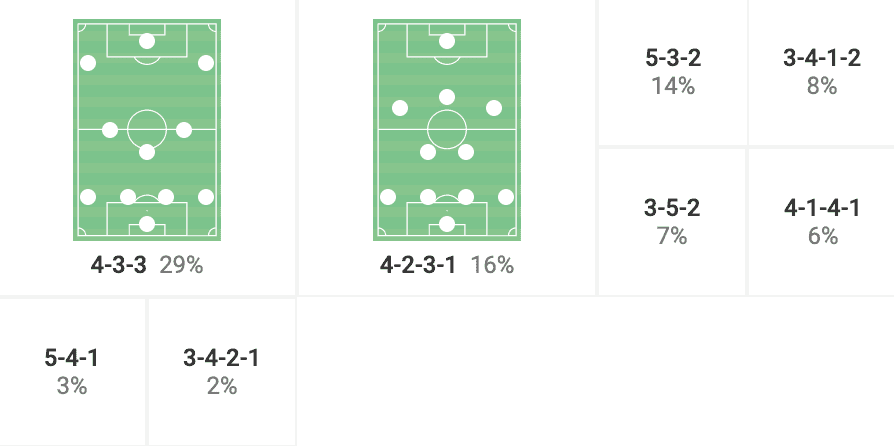
With just five games in charge, Hyballa has mostly used a defensive formation that has three players back as opposed to the usual four. He has utilised four at the back just once out of the possible five games.
The players’ natural excitement has been effectively restrained by the coach, who is exerting maximum effort to shape the game in his team’s favour. The influence one takes with a bunch of players he’s given is fascinating in its own way.
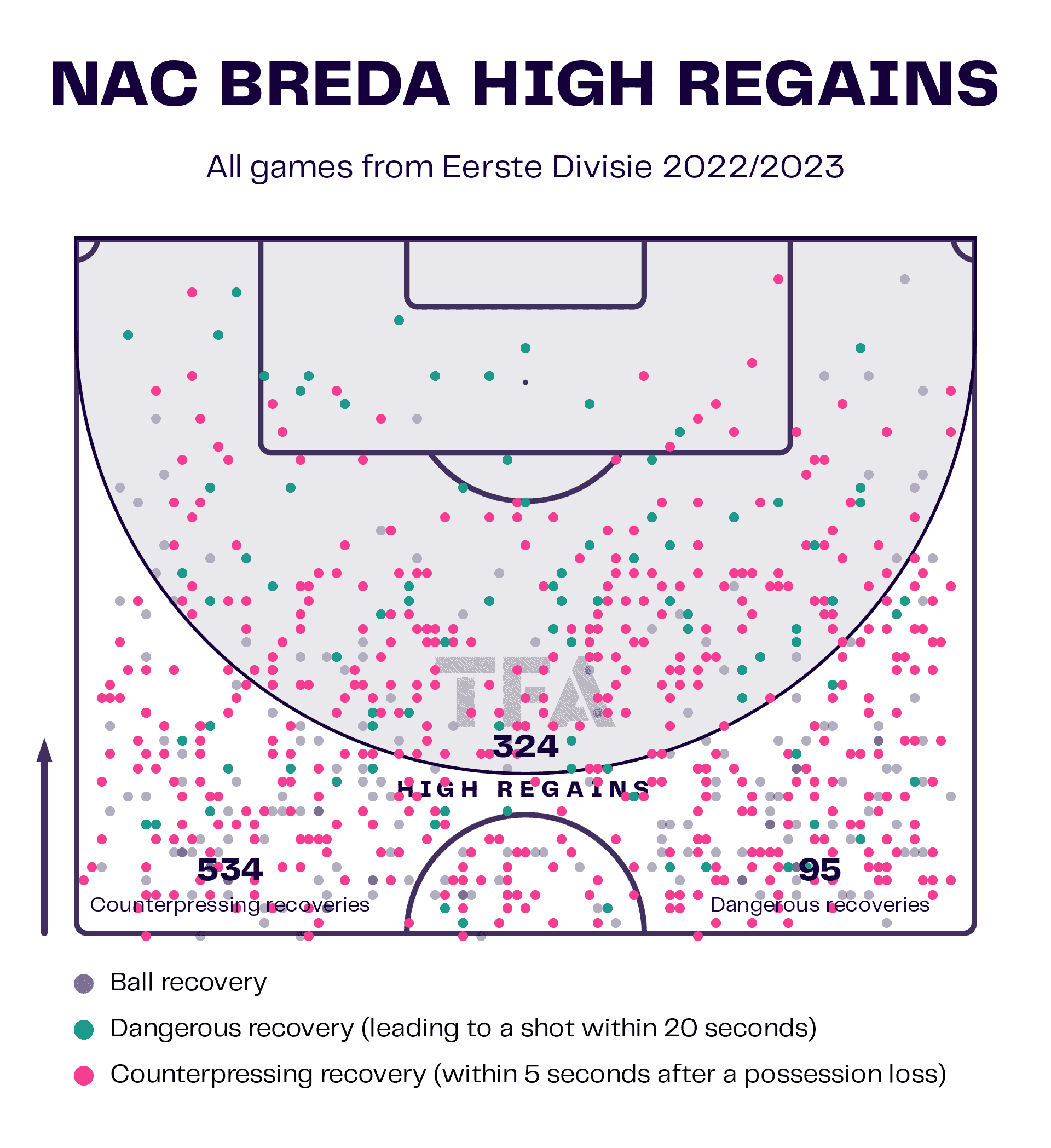
But the squad shouldn’t let itself get caught up in a situation like this when the midfield is conspicuously absent. The following diagram visually represents the team’s high regains this year in the Eerste Divisie.
Even though the counter-pressing hasn’t been very cooperative or team-oriented, the energy in it has made it succeed in a few instances. The problems it has might be fixed with a little insight and foresight, which would boost the efficiency of the personnel in that area.
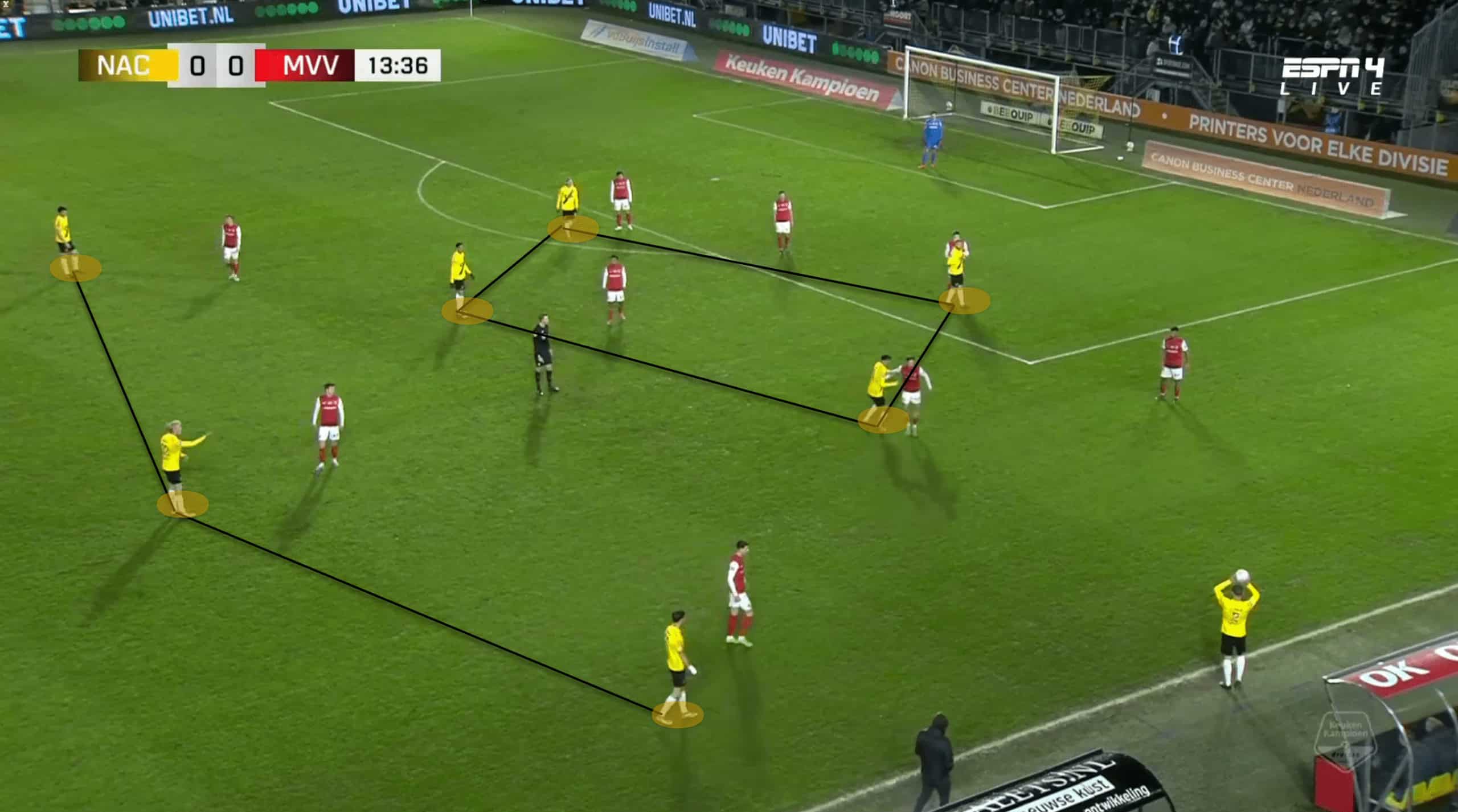
Under Hyballa, NAC plans to aggressively target MVV Maastricht by lining up on the visitors’ half of the field. Everyone is linked together and has room to develop combinations except for the two central defenders who were cropped out of the picture.
Four players are clustered around the goal area, and the fullbacks link hands with the lone pivot to create a three-man structure at the bottom. The team’s strategy for approaching throw-ins has been crucial at times, even more so than the width they provide on the field regularly.
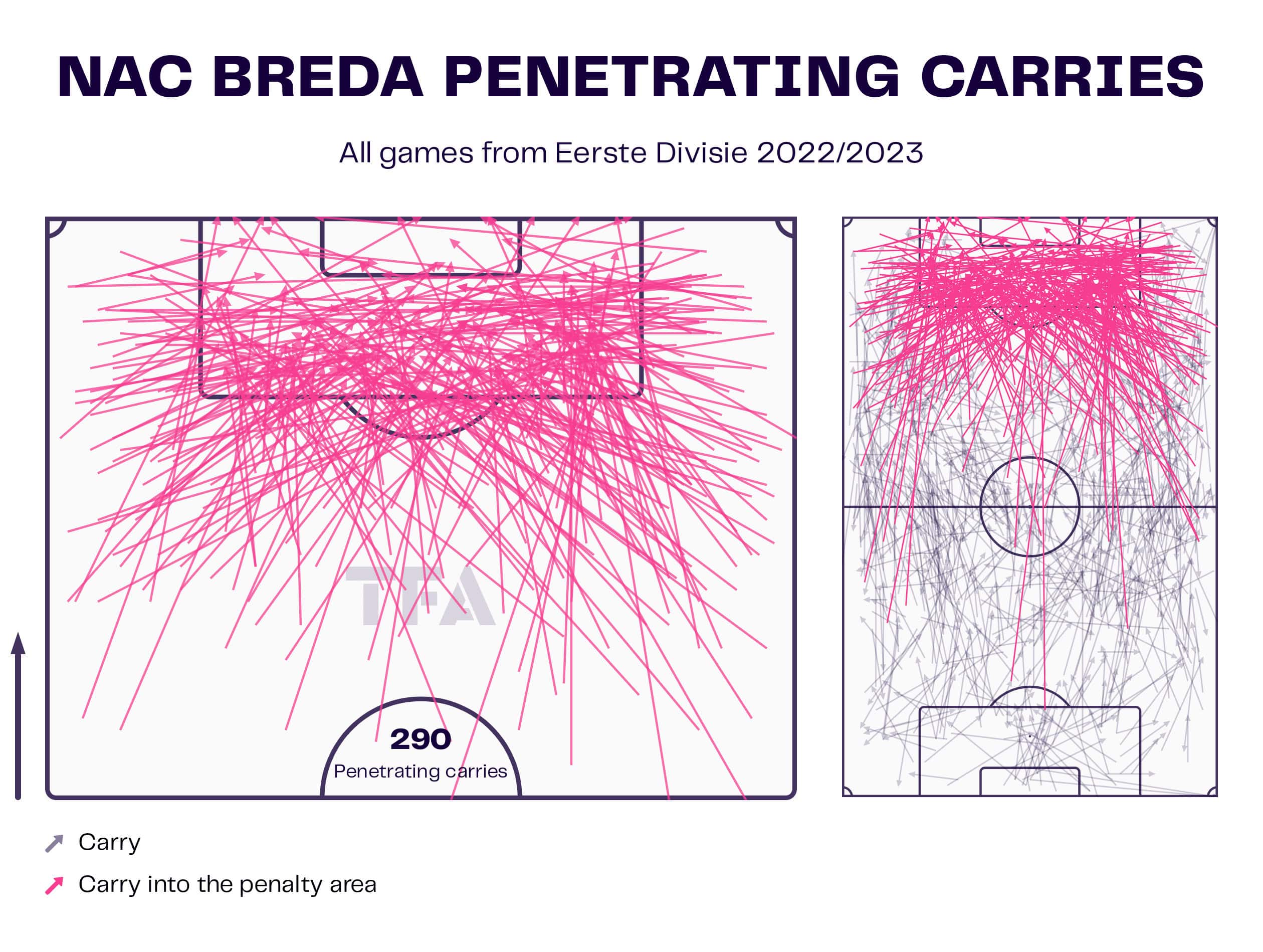
With another statistic being so crucial in the season, their incisive carries have been vital to their rapid advancement.
The accompanying image shows the total number of carries both within and outside the box. For a club that struggled to make the playoffs, the season-long total of 290 penetrating carries into the box was quite a feat.
Attacking style
The purpose of this topic is to examine the disparity between NAC’s 47 goals scored this season and their xG, which places them in fourteenth place.
Although PEC Zwolle leads the league in xG with 64.18, NAC only managed to reach 36.09. Despite this uncanny fact, the width with which NAC’s attackers spread out to provide breadth and attack with penetrations is fascinating to see.
The success NAC has had in avoiding negative coverage in the media has paid huge dividends in the form of new avenues for growth and the realisation of previously unattainable goals.
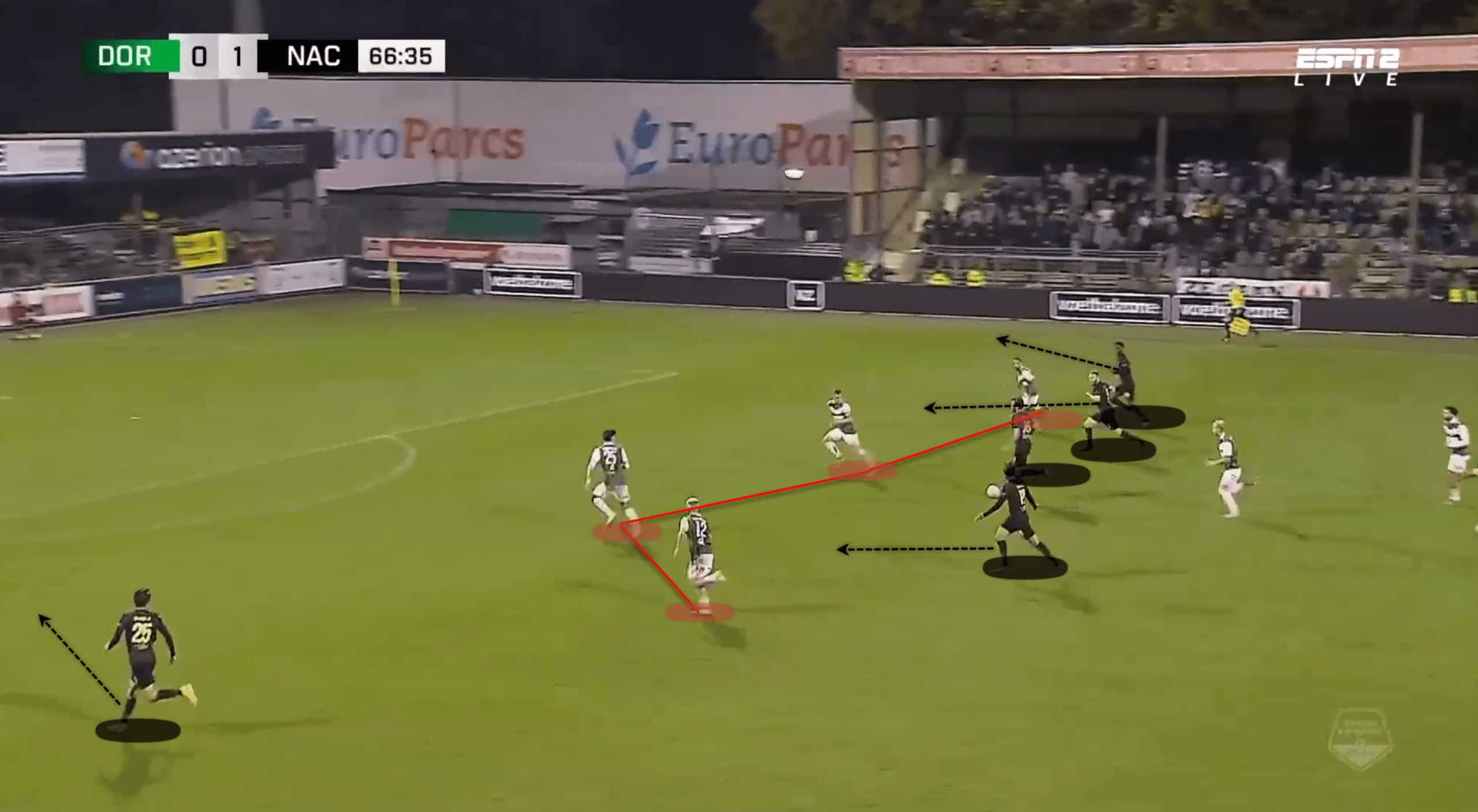
NAC used counterattacking tactics to defeat Dordrecht, who is currently on the verge of relegation. The following picture shows how many players want NAC to succeed and that they come up on the right occasion to offer support. Now that the wide players have joined the fray, it’s 5v4 and NAC has a decisive edge.
The play seemed nearly routine for NAC, given that it was played against the red-hot Heracles. The midfielder makes a run through the middle while the striker drops deep to set up the wide man and the central defender gets carried away.
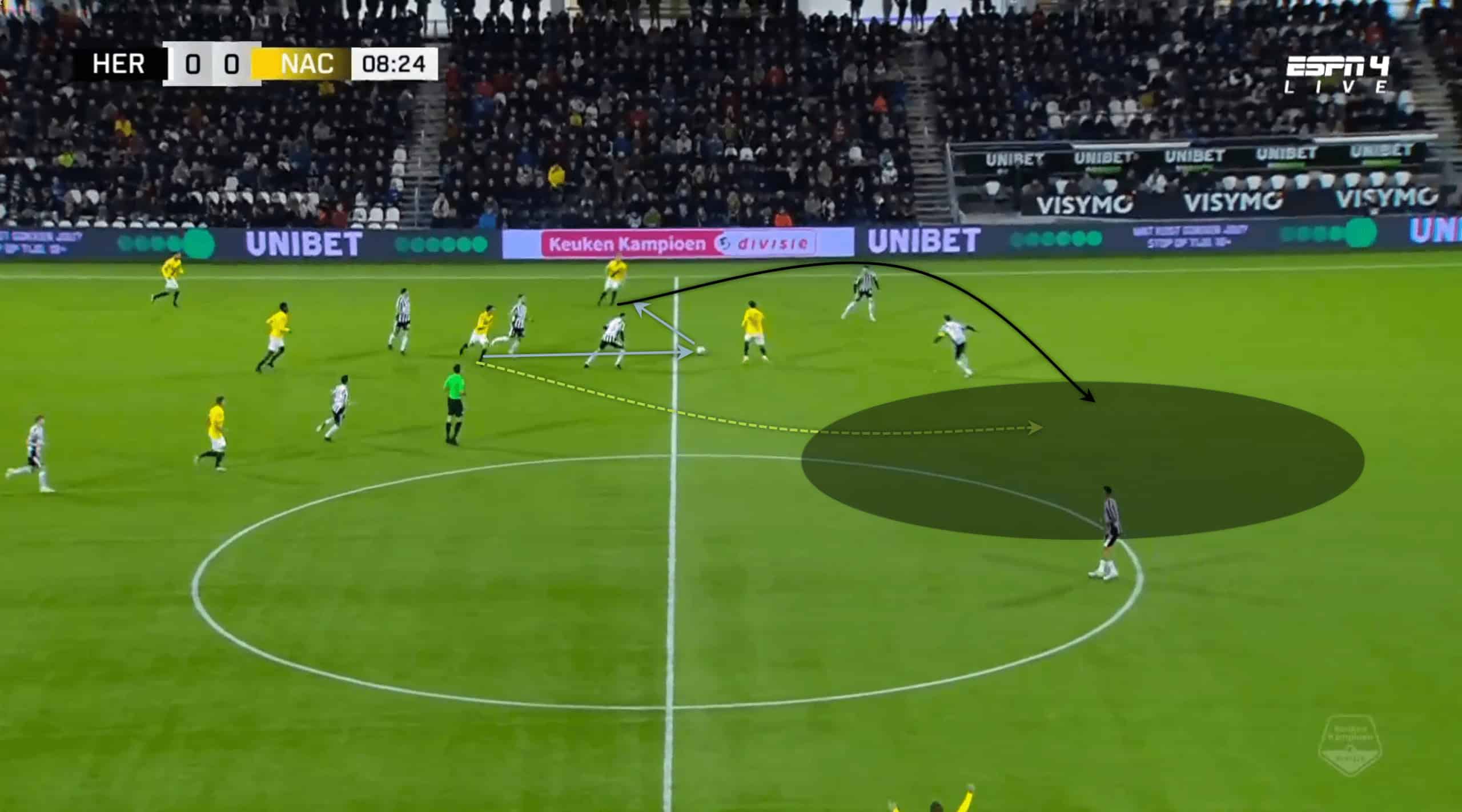
When a wonderful lobbed ball from the wide man landed at the midfielder’s feet, he ends up crossing the defensive line, taking a clear advantage out of the situation.
NAC took advantage of Heracles’s lack of vigilance. Setting up plays, and then finishing with a lobbed through-ball, is not an unusual tactic, but it does need some planning. Coaches are necessary due to the high level of coordination and mutual understanding required.
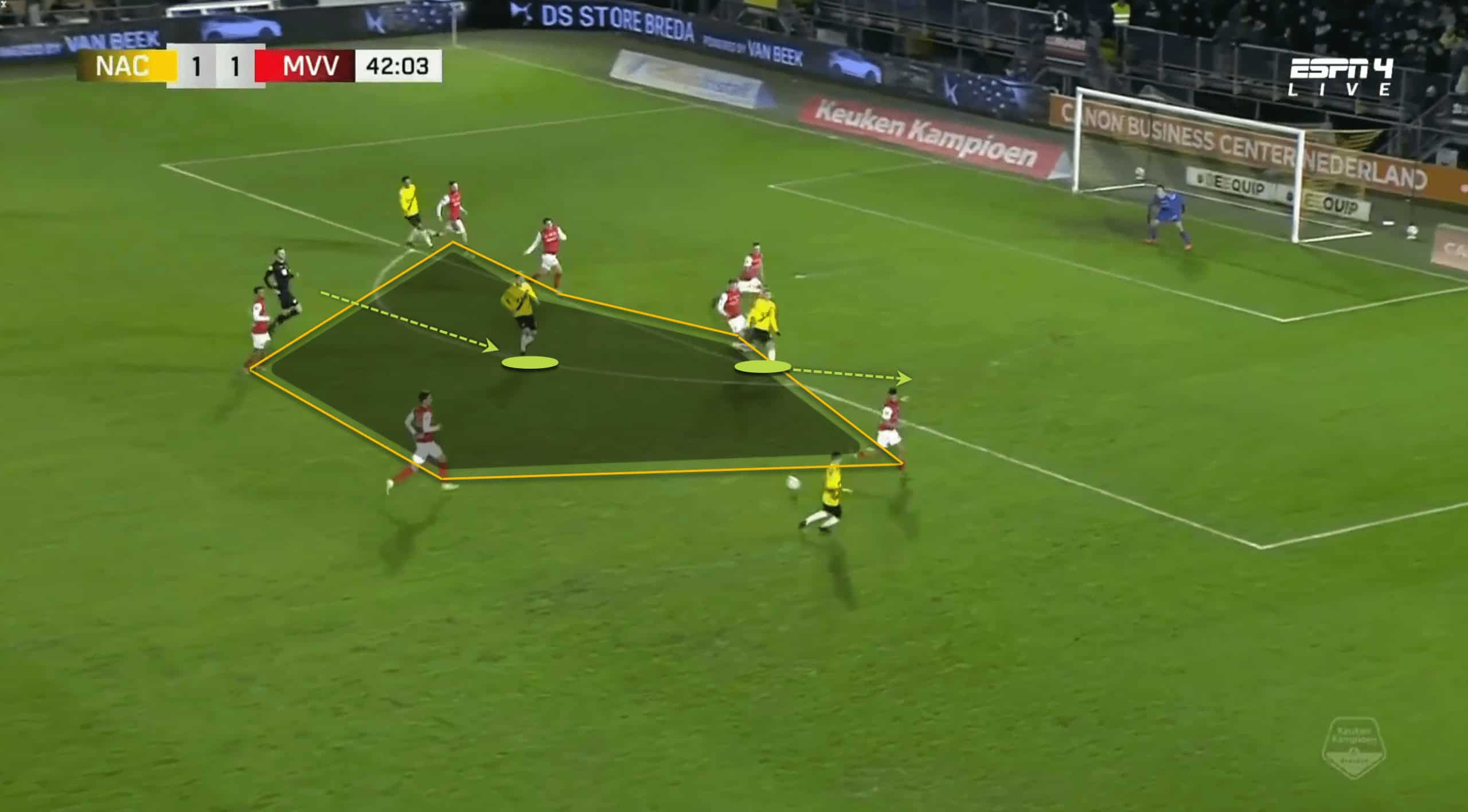
Hyballa’s most recent game was against MVV, where NAC scored four goals owing to some excellent pass reception in open territory. The right-back makes an aggressive run upfield in search of a teammate within the penalty area but instead locates his man outside it.
We observe the player successfully receiving the ball just where he stands amid the tilted structure. This buys him some breathing room as his teammates search for a more advantageous position.
The styles of play mentioned in this thread are quite similar to those used by Thomas Tuchel‘s 2016 Borussia Dortmund squad in the Bundesliga.
Defensive approach
In the Netherlands’ second division, where NAC Breda plays, the offensive competition is fierce. NAC’s defensive powers are put to the test, and they often come up short.
A team with such a strong focus on attacking is going to have an easy time establishing their counter-pressing groove.
Their counterattacking and positional attacking prowess suggest that this strategy has a good chance of succeeding. They would rather have their men fall back and protect than counter-press and strike again.
Nonetheless, the defenders’ everyday conditions raise tactical questions. We’ll examine the root causes of their difficulties in fending off other teams’ attacks.
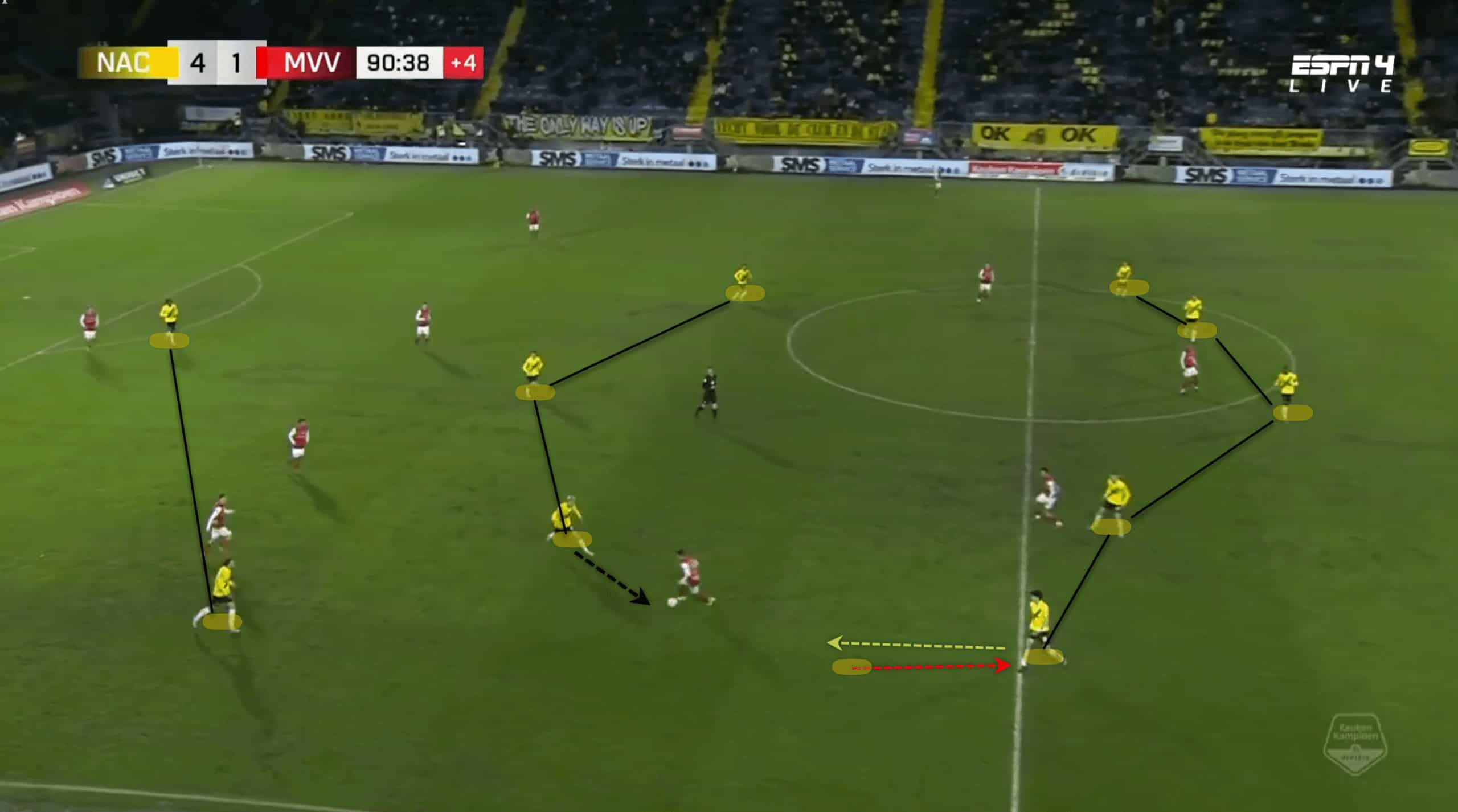
Firstly, NAC didn’t need five defenders in Hyballa’s recent victory against MVV. Instead, a backline of four was sufficient. The tagged player is confused as to whether he should press the ball carrier or retreat to the defence.
He then opts to take a reverse slide, leaving the ball carrier with just one defender. Decisions on whether to push and when not to are critical to the team’s ability to work together and create a cohesive identity.
NAC’s walls seemed to have caved down when up against Jong AZ’s ten-man attack. Neither the dismantling process nor the location of the opponents is known to the player.
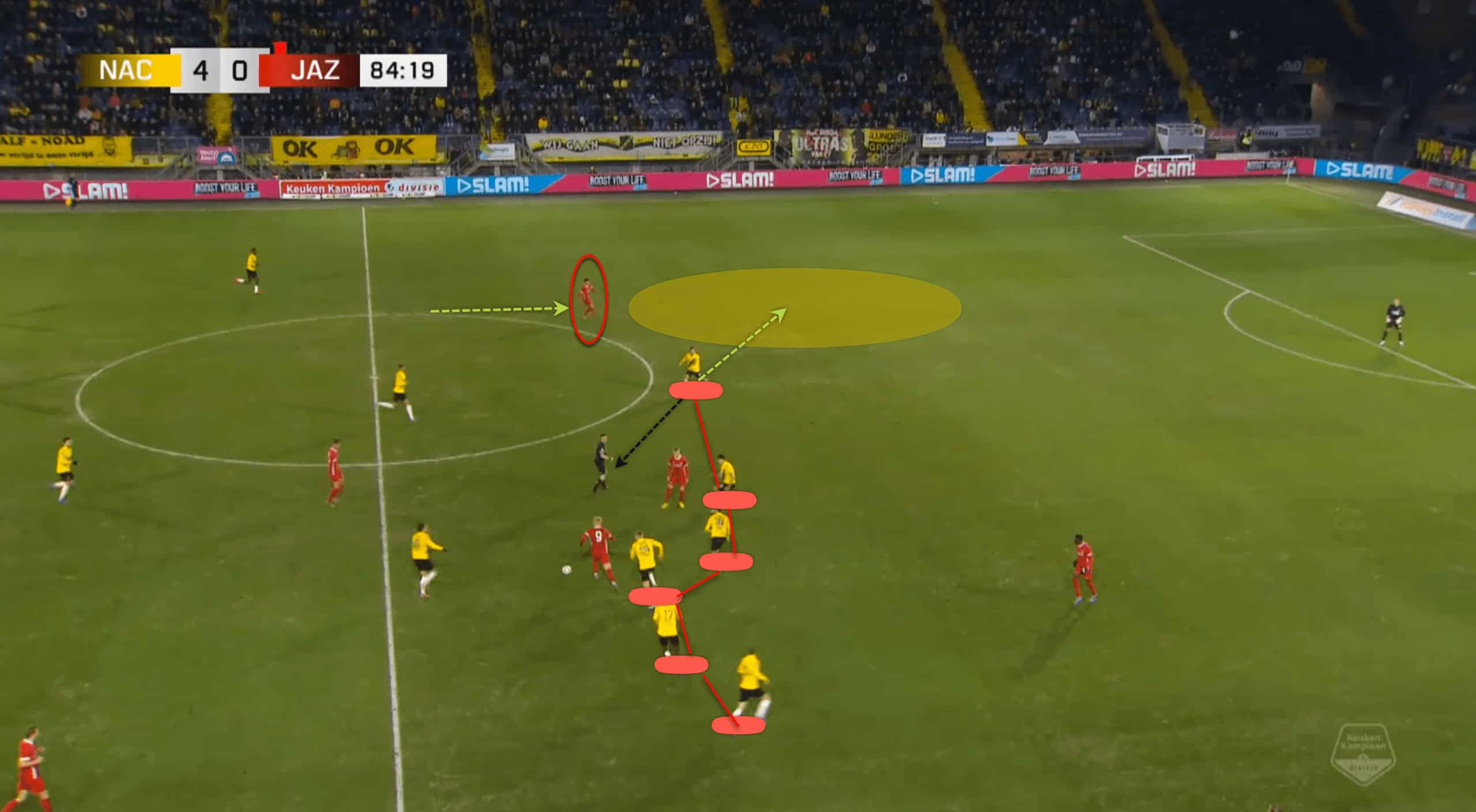
No one can explain what happened, but they all rush to make a half-tackle to allow the dribbler through. Potential and actual motions from the right back are shown in green and black, respectively, in the following illustration. Jong AZ, down to 10 men, began to pose serious defensive problems for NAC in the second half.
There are two-to-three at the edge of the penalty area for AZ against NAC. Players have paid a high price for the obvious relief on their faces after they get bodies around. AZ managed to score this time around.
During this season, many have questioned NAC’s defensive steadiness. They’ve been quite shaky and undependable. But they have the fifth-best PPDA in the league with 9.65, behind the top team’s 7.7 passes allowed per defensive action. Now their coordination is the prime suspect.
The aggression of NAC has properly penalised the coach for not providing adequate knowledge and consciousness, the most important tool for survival.
This squad is well-rounded and capable of doing many things well, not only defending well. NAC has the potential to be one of the clubs that gets promoted if the coach can give them the direction they need.
Conclusion
This season in the Eerste Divisie, NAC Breda have been a huge crowd-pleaser thanks to their proactive, aggressive brand of play. The team’s defensive strengths have overshadowed the high calibre of their offensive play.
That’s why the team’s chances of being promoted go up if the stated difficulties are dealt with internally and there’s a shift in decision-making. For the club’s faithful following that dates back over a century, promotion to the Eredivisie again would be the fulfilment of one’s lifelong goal.
Will Peter Hyballa take the club back to Eredivisie? It’s easy to picture how much the audience would like such a spectacular sight. If the club’s internal issues that this analysis reveals are resolved, they should be able to get back on their feet.
*Sections 2,3 and 4 changed on 16/03/2023 due to an error in the analysis.*





Comments